
Green Darner. The largest dragonfly in our area is the Common Green Darner. Its size and green head in contrast to the blue abdomen is easily noticed, even when it is in motion (which almost always is).

If you live in the Northwest, especially the Willamette Valley of Oregon or Puget Sound region of Washington, you are likely to find the following dragonflies and damselflies. I have included a dozen that are common, widespread, and distinctive. If you visit any pond in the region you are likely to see several of these. Note, however, that I am only showing the males which are usually more distinctive and more commonly seen.
While many dragonflies hunt from a perch, Darners are usually seen in flight patrolling the edges of the pond or stream. Their size and color scheme, however, makes them stand out.

Green Darner. The largest dragonfly in our area is the Common Green Darner. Its size and green head
in contrast to the blue abdomen is easily noticed, even when it is in motion (which almost always is).
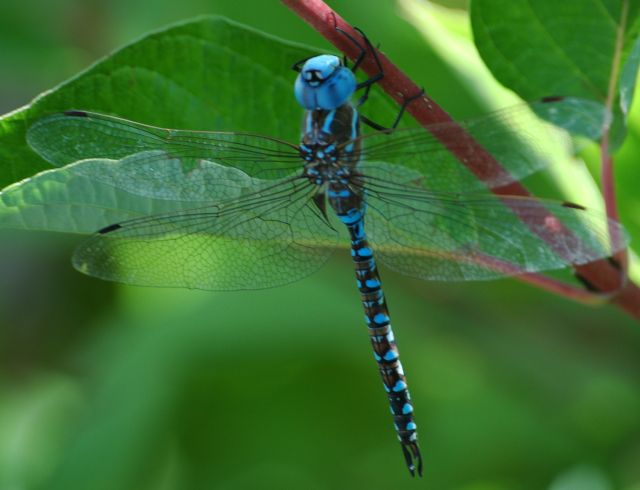
"Striped" Darners. There are several large Darners in our area with diagonal stripes on the
thorax and spots along the abdomen. Unfortunately, they are usually busy patrolling an area of the
pond and you rarely see them at rest where you could study them carefully. Initially, just note that they
are Darners.
Skimmers are a large family that are particularly common in ponds on the valley floor. I start with four that have patterned wings, then show two that are red, and finally show two small ones.
Patterned Wings
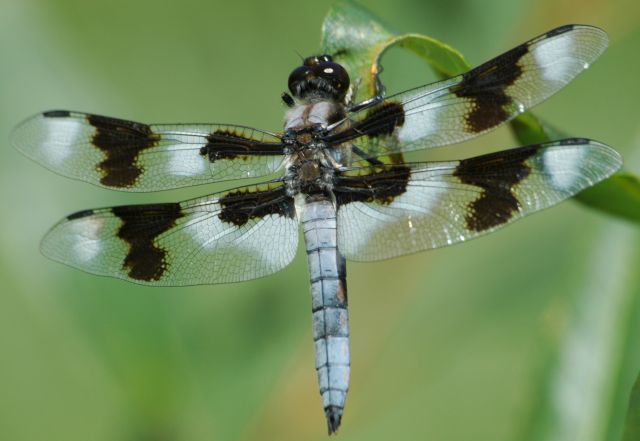
Eight-spotted Skimmer. Eight-spotted Skimmers are quite distinctive with
eight black spots on its wings.
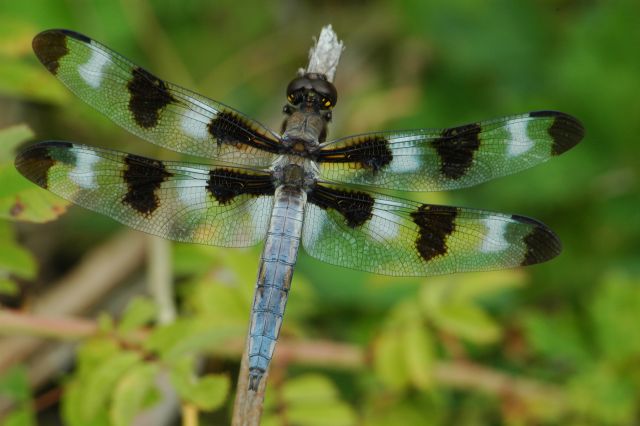
Twelve-spotted Skimmer. Twelve-spotted Skimmers, close cousin to the Eight-spotted, are also common.
You can sometimes see them together in the same pond. Count the black wing spots to tell them apart -- or
just note that the Twelvel-spotted has black spots on the wingtips.
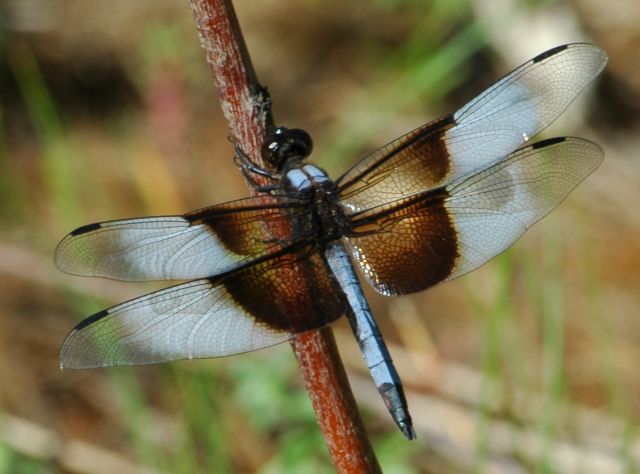
Widow Skimmer. The large rounded wing patches are distinctive.
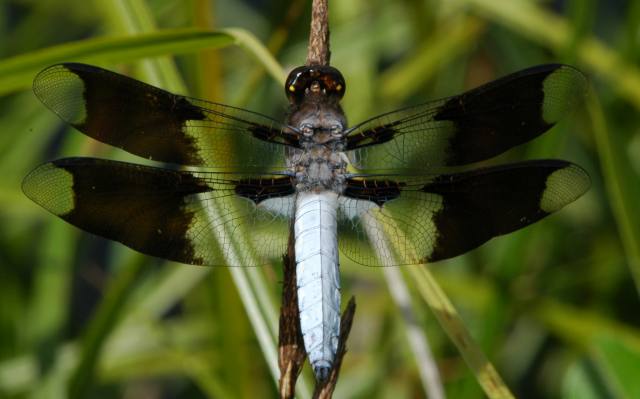
Common Whitetail. The Common Whitetail has a large spot in the middle of each wing.
Also note the white, rather heavy set, abdomen. These often rest on rocks rather than vegetation.
Red Abdomen
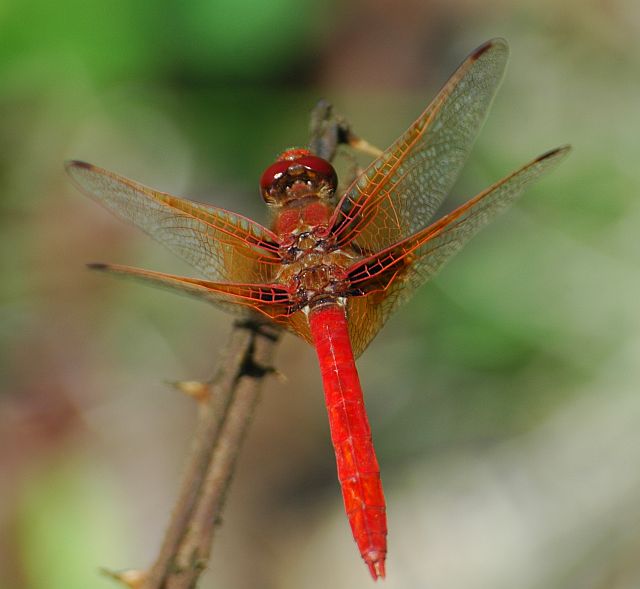
Cardinal Meadowhawk. This striking dragonfly can often be seen perched on a prominent shrub or branch near a
pond. It is quite common in our area. You may start noticing, however, that we have a few other red Meadowhawks
around, usually with a bit of black along the abdomen, but these are much less common.
For now you could think of them simply as "Red" Meadowhawks.
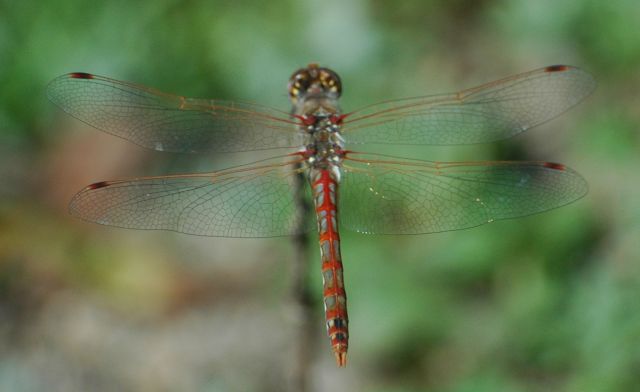
Variegated Meadowhawk. Another distinctive and common Meadowhawk is the Variegated. While the abdomen
has some red, there are other colors as well.
Small
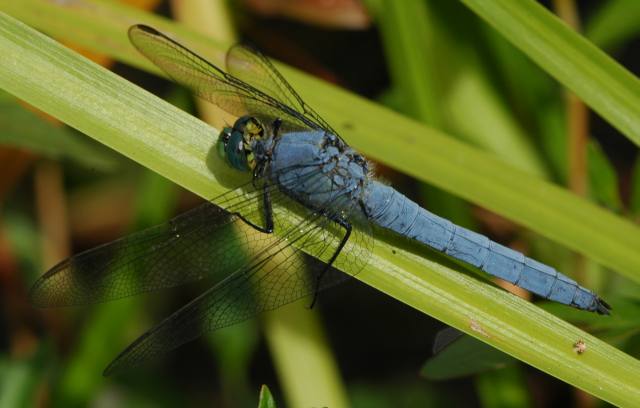
Western Pondhawk. The Western Pondhawk is a small Skimmer found in good numbers along the edge of ponds.
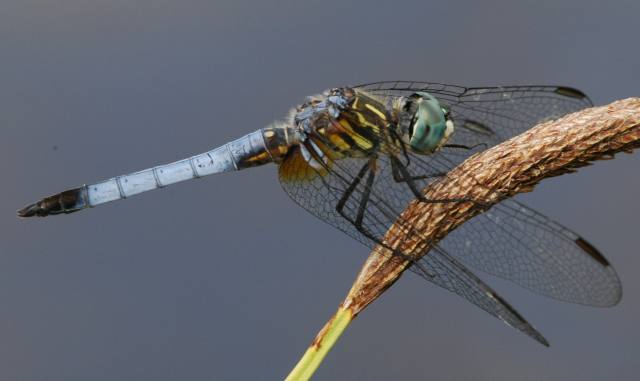
Blue Dasher. The Blue Dasher is another small Skimmer often found along side the Western Pondhawk.
It is similar to the Western Pondhawk in size, color, and behavior, but the lighter green eyes and the gold patch of
stripes on the abdomen set it apart.
Damselflies are generally quite small and beginners often overlook them. At rest, they hold their wings back or at an angle.
Pond damsels
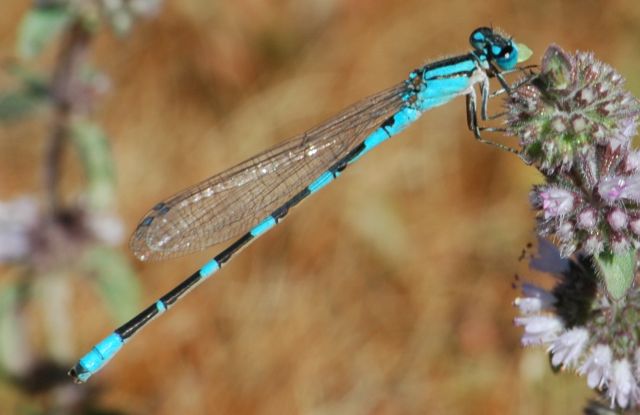
Bluet. Bluets are small damselflies with subtle differences in the pattern of
blue and white. Despite their slight appearance, they are just as carnivorous as dragonflies;
this little fellow has just devoured a bug. The Bluet species are very similar to each other.
Start by learning to recognize how the Bluets differ from other damselflies.

Pacific Forktail. The four blue spots on the thorax make this little fellow easy to distinguish.
Note that the wings are held over its back.
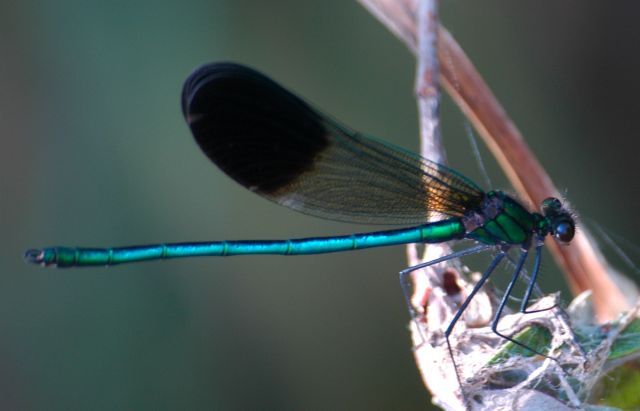
River Jewelwing. This distinctive fellow can be found along a riverbank.
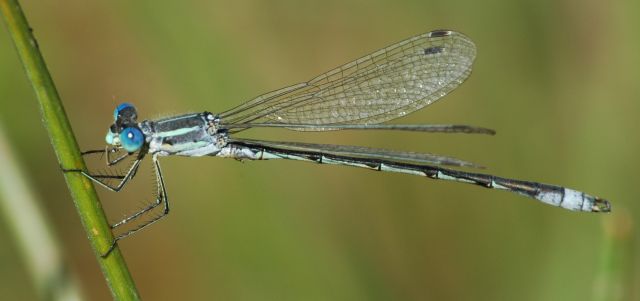
Spreadwings. At rest, spreadwings hold their wings back but spread at an angle.
The species are fairly similar. Start by simply recognizing the wing position as a Spreadwing.
Return to menu